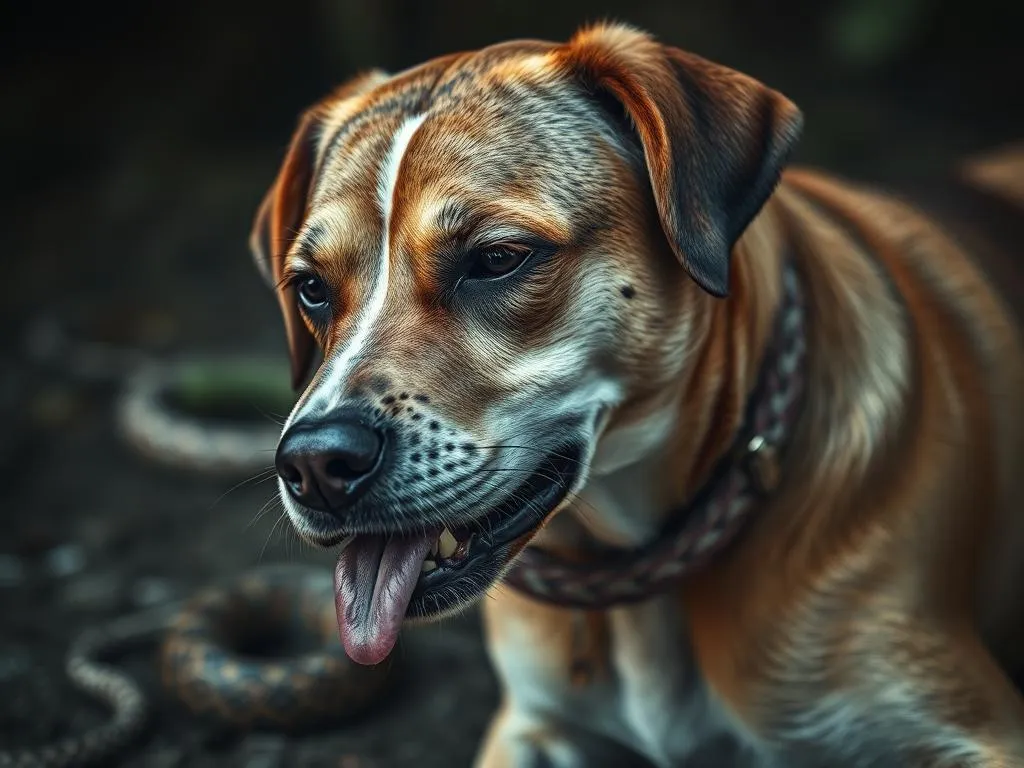
Introduction
Dog health care is a vital aspect of responsible pet ownership. Regular veterinary check-ups are essential for monitoring a dog’s health, ensuring vaccinations are up to date, and preventing potential health issues. As pet owners, it is our responsibility to maintain our dog’s health through proper nutrition, exercise, and regular vet visits.
One of the most fascinating aspects of canine health is their extraordinary sense of smell. Dogs possess an olfactory system that far surpasses that of humans, allowing them to detect a wide range of scents. This incredible ability raises an intriguing question: can a dog smell snakes? In this article, we will explore the science behind a dog’s sense of smell, their ability to detect snakes, and how pet owners can ensure their dogs stay safe in snake-prone areas.
Understanding a Dog’s Sense of Smell
How Dogs Sense Smells
To understand whether a dog can smell snakes, we first need to appreciate the anatomy of a dog’s nose. A dog’s nose is equipped with approximately 300 million olfactory receptors, compared to a human’s mere 6 million. This anatomical difference allows dogs to detect scents at remarkable concentrations.
Dogs also have a specialized structure called the vomeronasal organ, which aids in detecting pheromones and other chemical signals. This anatomical prowess enables dogs to not only recognize familiar scents but also to discern new ones with impressive accuracy.
The Science Behind Smelling
The science behind how dogs process and identify different scents is equally fascinating. When a dog inhales, air passes through their nasal passages, where olfactory receptors identify various scent molecules. The brain then processes these signals, allowing dogs to distinguish between multiple odors.
The sheer number of olfactory receptors means dogs can detect scents at levels that are undetectable to humans. For instance, dogs can identify a single drop of blood in an Olympic-sized swimming pool! This incredible ability raises the question: can a dog smell snakes? The answer is yes, and here’s why.
Dogs and Their Ability to Smell Snakes
Can Dogs Really Smell Snakes?
Research indicates that dogs can indeed detect snakes. Studies have shown that dogs can pick up on the unique scent signatures associated with snakes, enabling them to alert their owners or even perform search-and-rescue operations in snake-infested areas.
The ability to smell snakes is not only advantageous for hunting or tracking but also crucial for safety. Certain breeds, particularly those with strong hunting instincts, may excel at detecting snakes due to their heightened olfactory capabilities.
Scent Characteristics of Snakes
Snakes have distinct odors that dogs can identify. These scents may come from the snake’s skin, saliva, or even prey scent that lingers in their environment. For example, venomous snakes may have different chemical compounds in their venom that can be detected by a dog’s sensitive nose.
Dogs may also differentiate between venomous and non-venomous snakes through their unique scent profiles. This ability can be lifesaving, as it allows dogs to avoid dangerous encounters with venomous species.
Training Dogs to Detect Snakes
Training Techniques
To harness the ability of dogs to detect snakes, proper training is essential. Basic obedience training serves as a foundation for more advanced scent recognition training. Dogs need to learn commands and develop focus to effectively engage in scent detection tasks.
Scent recognition training methods involve introducing dogs to the specific odors of snakes in a controlled environment. This can be done using scent samples or through exposure to live snakes, ensuring that the dog associates the scent with a positive experience.
Best Practices for Snake Detection Training
Reward-based training techniques are particularly effective in teaching dogs to identify snake scents. When a dog successfully identifies the scent, offering treats or praise reinforces the behavior. It’s important to gradually increase the difficulty of the training, allowing dogs to become more proficient in their detection skills.
Socialization and exposure are also key components of effective training. Allowing dogs to explore various environments, including snake-prone areas, helps them become accustomed to the scents they may encounter. This training not only aids in detecting snakes but also prepares dogs for real-world situations.
Safety Tips for Dog Owners
Preventing Snake Encounters
As a responsible dog owner, preventing snake encounters is crucial for your dog’s safety. Here are some best practices for walking dogs in snake-prone areas:
- Use a Leash: Keeping your dog on a leash allows for better control and reduces the likelihood of wandering into snake territory.
- Stay on Designated Paths: Stick to well-trodden paths and avoid tall grass or underbrush where snakes may be hiding.
- Be Aware of Surroundings: Always be vigilant and look for warning signs of snake activity, such as shed skins or tracks.
Recognizing Signs of Snake Bites
Despite taking precautions, snake bites can still occur. Recognizing signs of snake bites in dogs is essential for prompt action. Symptoms to watch for include:
- Swelling around the bite area
- Severe pain or whimpering
- Rapid breathing or panting
- Vomiting or lethargy
If you suspect your dog has been bitten by a snake, immediate action is necessary. Seek veterinary assistance as soon as possible, as timely care can significantly affect the outcome.
Health Care for Dogs in Relation to Snake Encounters
Regular Health Check-ups
Regular health check-ups are essential for maintaining your dog’s overall health. This includes not only vaccinations and preventive care but also discussions with your veterinarian about potential risks in your environment, including snake encounters.
Preventive care measures, such as vaccinations against snake venom (where available), can help protect your dog in snake-prone areas. Always consult your vet for tailored advice on how to keep your dog safe.
Emergency Care for Snake Bites
In the unfortunate event that your dog is bitten by a snake, understanding the first aid steps is crucial. Here are some immediate actions to take:
- Stay Calm: Your dog can sense your anxiety, so remain calm.
- Keep Your Dog Still: Movement can increase the spread of venom, so encourage your dog to remain still.
- Avoid Ice or Tourniquets: These methods can cause more harm than good.
Always seek veterinary help immediately, as professional care may involve antivenom treatment or other medical interventions.
Conclusion
In summary, dogs possess an extraordinary ability to detect snakes due to their advanced olfactory systems. As responsible pet owners, it is crucial to train our dogs to recognize snake scents and to implement safety measures to prevent snake encounters. Regular veterinary check-ups, knowledge of snake bite symptoms, and emergency care plans are essential for ensuring our dogs’ health and safety.
By understanding and appreciating our dogs’ unique abilities, we can foster a proactive approach to dog health care that prioritizes their well-being and keeps them safe in potentially hazardous environments. Responsible dog ownership involves not only caring for our pets but also being aware of the challenges they may face in the great outdoors.









